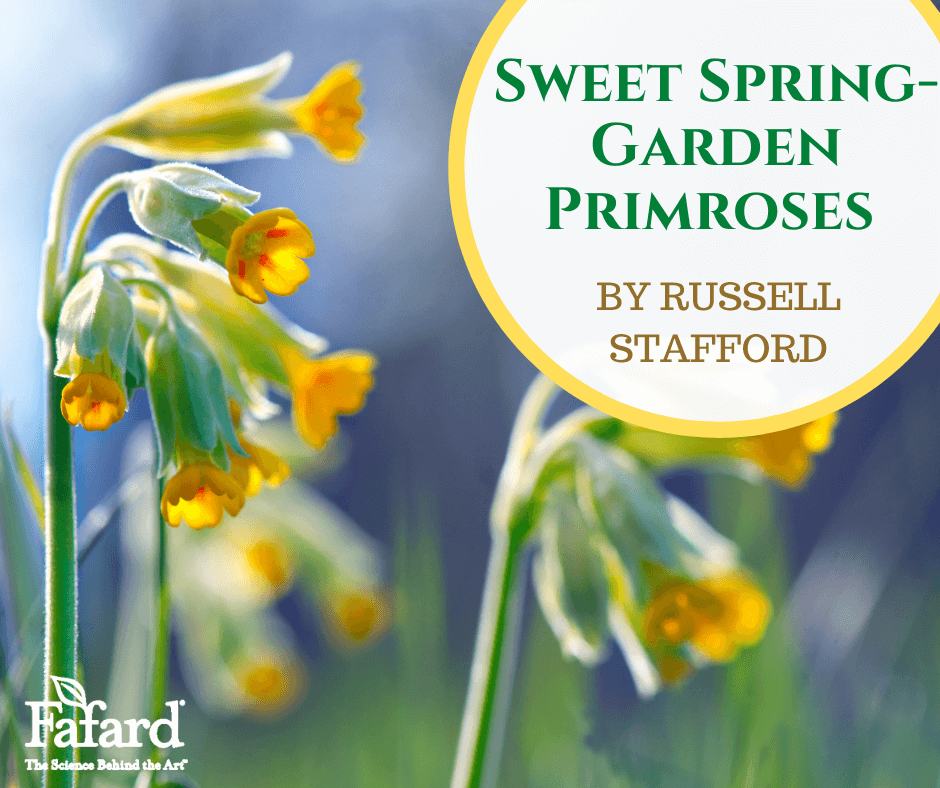
Primroses (known botanically as Primula) have a reputation for being garden prima donnas. Often, this characterization is deserved. Many Primula are fussy garden dwellers at best, hailing from specialized habitats such as alpine crevices and glacial screes. Don’t let this fact keep you from the numerous easily cultivated and highly rewarding members of the genus, however. If you have some shade (or in some cases, even if you don’t) and you’re somewhere in USDA Hardiness Zones 4 to 8, there’s likely a primrose for your garden. Of course, you’ll want to amend any sandy or heavy clay soil with a good helping of Fafard® Premium Natural & Organic Compost.
Drumstick Primrose (Primula denticulata)
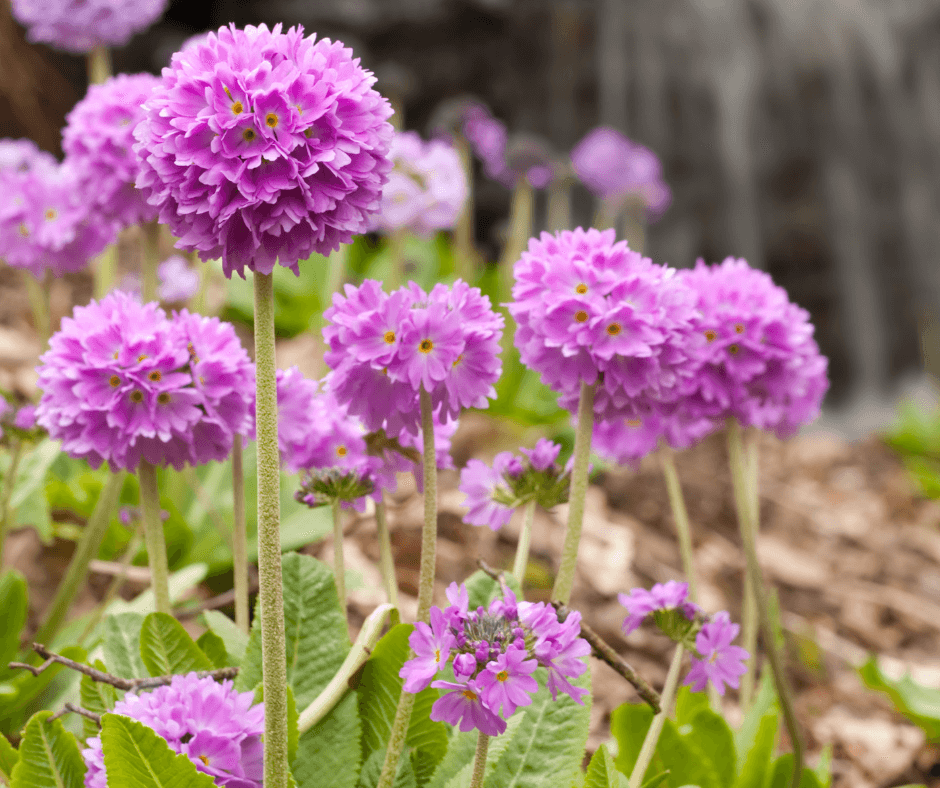
The primrose season starts in late winter or early spring with this adorable but surprisingly tough little elf from the Himalayas. The common name refers to the ball-shaped flower cluster that forms the business end of the imaginary “drumstick”. The 4-inch flower stem comprises the stubby “stick”. A rosette of toothed, oval, up-angled leaves collars the base of the stick (as is the case with most of the other primroses described below). Primula denticulata blooms in a wide range of colors, from the typical mauve-purple through shades of white, pink, red, and violet-blue. The all-white ‘Alba‘ is easily found in nurseries as is traditional pink. A not-too-dry soil in part shade is ideal, but it will do fine in moist sunny niches in USDA Hardiness Zones 4 through 7.
Common Primrose (Primula vulgaris)
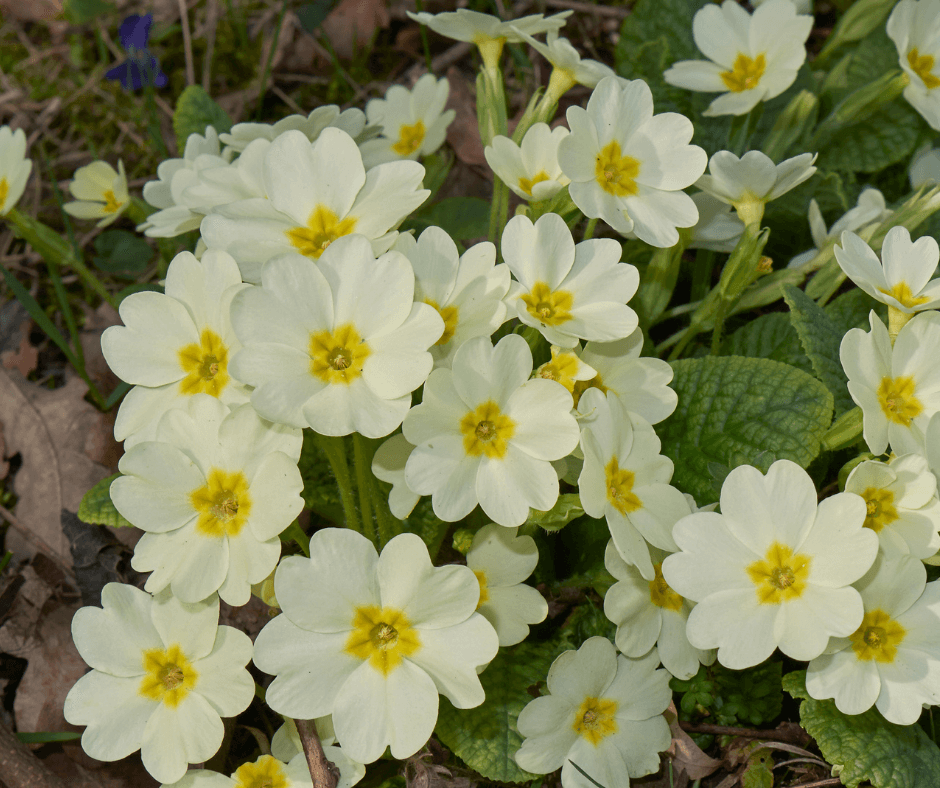
In the wild, this cherished European native bears individual yellow flowers on 4- to 6-inch stems over clumps of somewhat radish-like leaves. In cultivation, it’s been selected and hybridized into numerous hues, often with the “wild” yellow coloration confined to a central eye. Many vulgaris spinoffs produce clustered rather than individual blooms. Most notable of these are the popular Polyanthus hybrids (Zones 4-8), which flower in a rainbow of colors from rich red to deep blue. Flowers of “acaulis” hybrids – another swarm of primroses derived from Primula vulgaris – are singly borne. Among the best of the acaulis hybrids are the Juliana primroses, a swarm of miniature cultivars involving the diminutive species Primula juliae. The earliest vulgaris hybrids and forms (including the Julianas) bloom with the drumsticks in late winter and early spring, but some varieties flower weeks later. Many are sweetly fragrant, adding further sensual delight to the early-season garden. Partial shade and humus-rich soil are ideal for all forms and hybrids of this storied species.
Cowslip (Primula veris)
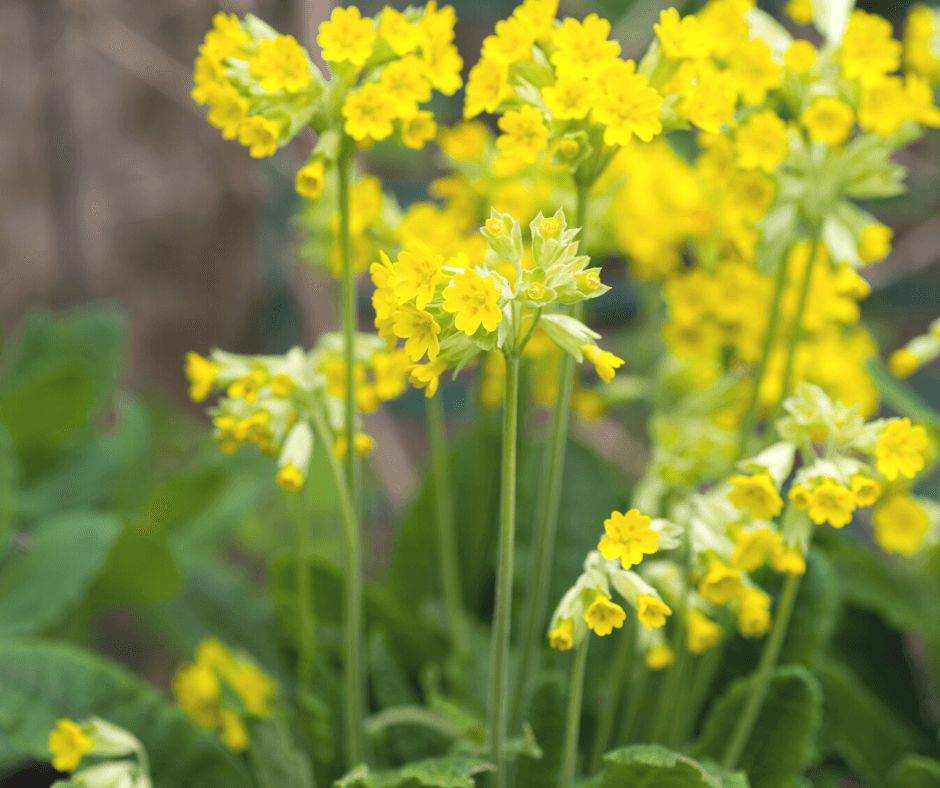
Another European native treasured and cultivated since ancient times, cowslip (Zones 3-8) is instantly recognized by its signature lopsided clusters of nodding yellow to red flowers that are corseted with funnel-shaped bracts for much of their length, with the petals flaring at the tips. Their form and presentation lend them a lovably disheveled look, ideally suited for cottage gardens and other informal settings in partial shade to moist full sun. Named selections include ‘Coronation’, a seed-grown strain with relatively large yellow, orange, or red flowers (‘Sunset Shades’ is similar). The subspecies macrocalyx also has larger flowers that tend toward orange. All forms of cowslip flower a bit later than most of the vulgaris primroses, in early to mid-spring. They’re also quite lime-tolerant, doing well in acid to slightly alkaline soil.
Oxslip (Primula elatior)
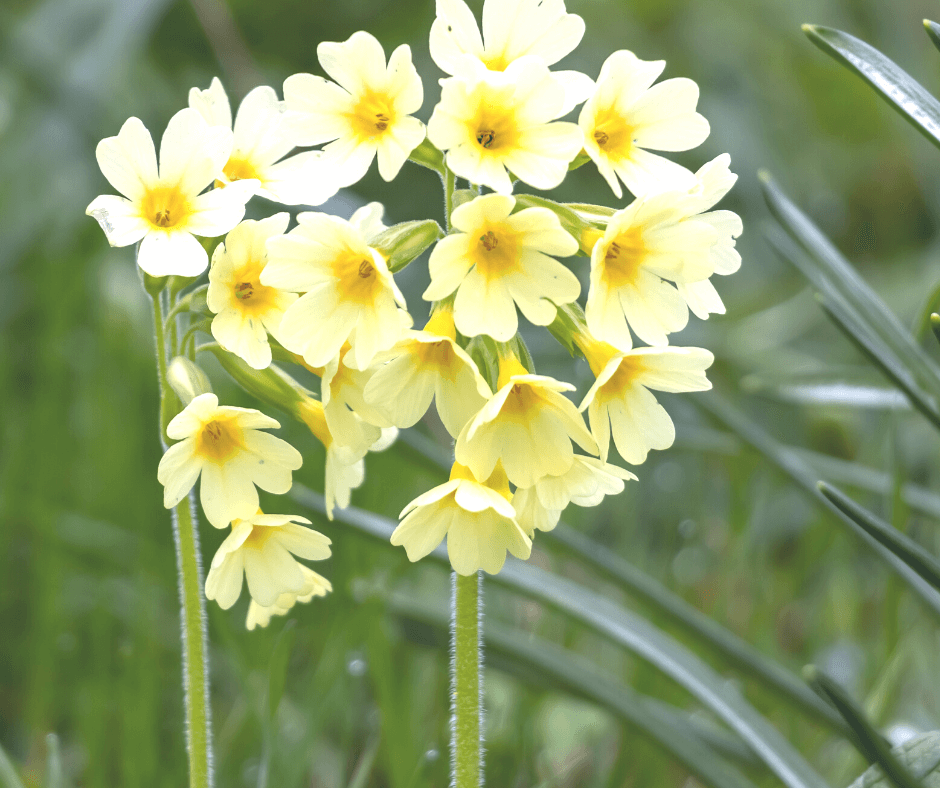
Europe gives us a third eminently growable yellow-flowered primrose species, Primula elatior (Zones 3-8). The scentless, straw-yellow blooms flare more broadly at the tips than those of cowslip, and are presented in fuller, more symmetrical clusters. Flowering time and soil preferences are much the same as cowslip’s.
Cherryblossom Primrose (Primula sieboldii)
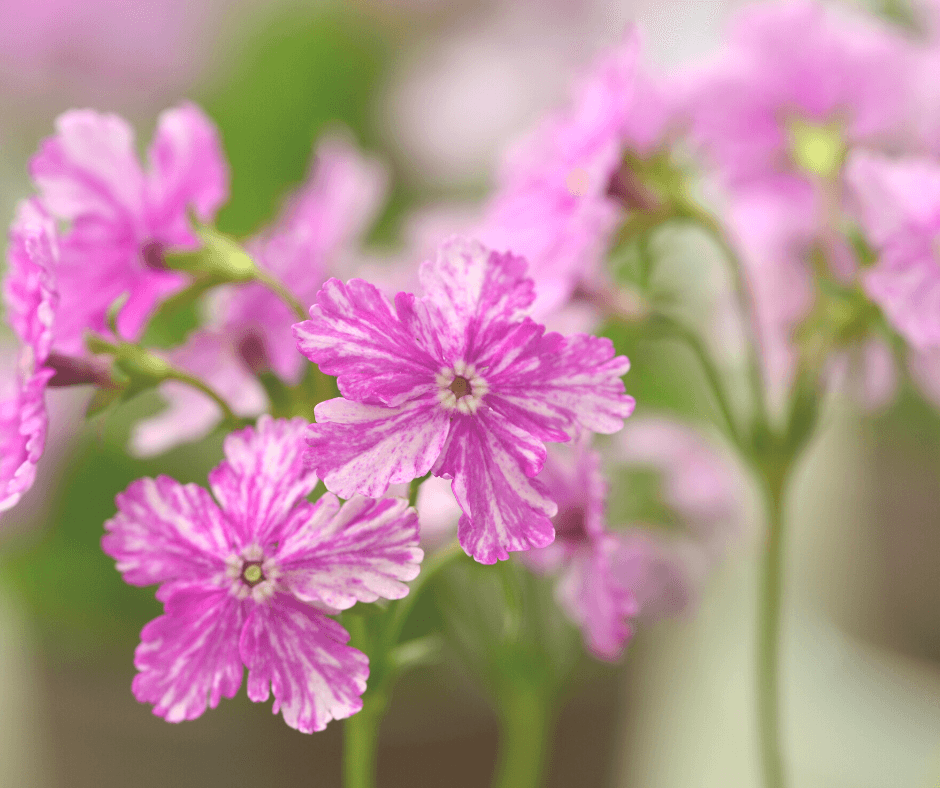
Primula saves some of its most spectacular displays for late spring, as exemplified by this highly adaptable, multi-splendored East Asian native. In mid to late May cherryblossom primrose (Zones 4-8) throws abundant clusters of showy, starry blooms that arise from spreading clumps of scalloped leaves. The typically wedge-shaped petals are variously cut and fringed and crimped, depending on the variety. Flower color ranges from pink to purple to blue to white, often with contrasting striping. It’s for good reason that Japanese gardeners have selected and named hundreds of cultivars of cherryblossom primrose over the centuries. A few of these so-called Sakurasoh hybrids are available in the U.S. and are well worth seeking out. But any form of Primula sieboldii makes an excellent addition to a partly shaded, acidic garden niche. Plants are early-dormant in summer and late to arise in spring, so be sure to remember where you planted them!
Candelabra Primrose (Primula japonica)
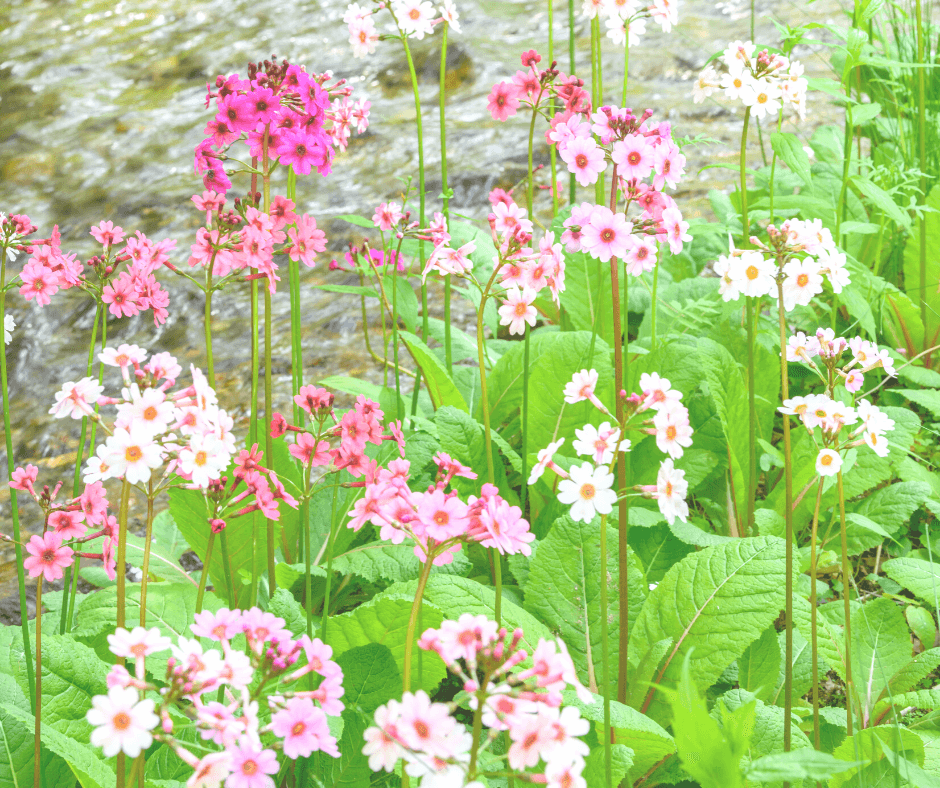
Actually, there are many candelabra primrose (Zones 4-8) species, all flowering gloriously in late spring – but this is the quintessential one. The common name comes from the tiered whorls of flowers borne candelabra-fashion on 2- to 3-foot stems, over shaggy clumps of large puckered leaves. Primula japonica usually flowers in red (as in ‘Miller’s Crimson’), but white and pink forms also occur (including ‘Postford White’ and ‘Apple Blossom’). Other candelabra species venture into other parts of the spectrum, including yellow (Primula bulleyana) and lavender-purple (Primula beesiana). Hybridization readily occurs between varieties and species, so plant only one if you don’t want mongrel seedlings. All candelabra primroses thrive in humus-rich, damp to boggy soil in part shade or sun.
Any one of these Primula would make a wonderful, carefree addition to your spring garden. If you think all primroses are prima donnas, you’re in for a pleasant surprise.
